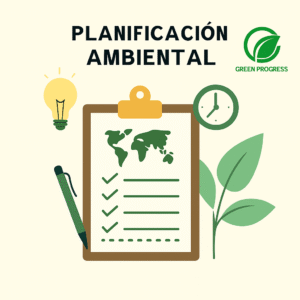In today’s world, where sustainability and environmental responsibility are more important than ever, precise tools for evaluating environmental impact are essential. One of the most practical and widely respected methodologies is the Conesa Matrix a structured, semi-quantitative tool for Environmental Impact Assessment (EIA). Developed by Emilio Conesa Fernández-Vitora, this matrix serves as a comprehensive framework for analyzing and quantifying the environmental effects of a project or activity.
Unlike more generalized impact checklists, the Conesa Matrix offers a standardized numerical method to evaluate the magnitude, significance, and characteristics of environmental impacts, providing decision-makers with reliable insights. Whether you’re an environmental consultant, a public agency officer, or a student in environmental sciences, understanding this matrix is crucial for effective environmental planning.
Origin and Historical Foundations
The Conesa Matrix traces its origins back to the growing environmental consciousness of the late 20th century. While matrices such as the Leopold Matrix (1971) introduced the grid-based impact evaluation approach, Emilio Conesa refined this method into a more objective and quantifiable model.
In his seminal work «Guía Metodológica para la Evaluación del Impacto Ambiental», Conesa offered a rigorous yet adaptable system that could be applied to any project type—from infrastructure to energy development. Since then, it has become a staple in Latin American environmental assessments, and it is gaining traction internationally due to its balance of technical rigor and usability.
Make your Environmental Impact Assessments simple and effective for your business, project, or activity with the Conesa Matrix.
Components and Evaluation Criteria
The Conesa Matrix is structured around a grid where project actions (rows) intersect with environmental factors (columns). Each intersection is evaluated using a series of qualitative-to-quantitative criteria, allowing practitioners to determine how significant an impact is.
Key Criteria Evaluated:
- ± = Nature of the impact
I = Importance of the impact
i = Intensity or probable degree of destruction
EX = Extent or area of influence of the impact
MO = Moment or time between the action and the appearance of the impact
PE = Persistence or permanence of the effect caused by the impact
RV = Reversibility
SI = Synergy or reinforcement of two or more simple effects
AC = Accumulation or progressively increasing effect
EF = Effect (direct or indirect type)
PR = Periodicity
MC = Recoverability or the possible degree of reconstruction by human means
Each of these is graded on a predefined scale, often from 1 to 5 or -5 to +5, depending on whether the impact is positive, negative, or neutral.
This multi-criteria approach allows for high granularity in impact assessment, helping to distinguish between minor, moderate, and critical effects across diverse environmental elements.
Formula and Scoring System
What sets the Conesa Matrix apart is its semi-mathematical approach. Instead of relying solely on subjective judgments, the matrix applies a scoring formula that calculates the Total Impact Value (VIA) using a weighted sum of the criteria values.
Standard formula:
I = ± [3i +2EX+MO+PE +RV +SI +AC +EF + PR +MC]
Depending on the source or institutional adaptation, the number of criteria involved may vary (from 4 to 8). However, the essence remains: multiplying weighted values to obtain a single index per interaction, making it easier to prioritize mitigation measures.
The result for each cell reflects the overall significance of the environmental impact, and the matrix can be summarized to give total project-level impact indicators.

Interpreting the Results
After filling the matrix, the calculated VIA values are categorized into ranges of environmental significance. This helps stakeholders understand which aspects of a project are most concerning.
Classification:
- 0 to ±25: Insignificant impact
- ±26 to ±50: Low significance
- ±51 to ±75: Moderate impact
- ±76 to ±100: Significant impact
- Above ±100: Critical or severe impact
These classifications guide environmental mitigation strategies, helping to identify which project elements require redesign or abandonment.
Furthermore, the Conesa Matrix results are often visualized in heatmaps or color-coded grids, enhancing interpretability for non-experts and project stakeholders.
Advantages Over Other Impact Assessment Tools
The Conesa Matrix offers several distinct advantages over tools like the Leopold Matrix or simple impact lists:
- Quantification: Assigning numerical values allows objective comparisons.
- Multi-criteria scoring: Evaluates impacts from multiple environmental perspectives.
- Versatility: Applicable across sectors—mining, energy, agriculture, infrastructure.
- Clarity: Results are easily interpretable and communicable to stakeholders.
- Adaptability: Matrix criteria can be customized based on local legislation or project types.
While it does not replace in-depth environmental modeling, it’s a reliable screening and decision-support tool in the early planning phases.
Applications and Practical Recommendations

Who uses the Conesa Matrix?
- Environmental consultants
- Government agencies
- Academics and researchers
- Project developers and engineers
Best practices for implementation:
- Team-based evaluation: Involving multidisciplinary experts ensures balanced scores.
- Public involvement: Stakeholder feedback can improve transparency and relevance.
- Digital adaptation: Use spreadsheets or custom software for matrix calculation.
- Legal alignment: Tailor the matrix to comply with national EIA laws.
Countries like Mexico, Peru, Ecuador, and Spain already integrate this matrix into their EIA systems. Its simplicity, combined with analytical strength, makes it ideal for both developing and developed regions.
Why the Conesa Matrix Still Matters
As global environmental challenges grow more complex, structured and adaptable tools like the Conesa Matrix offer a bridge between science and decision-making. It empowers users to identify, quantify, and prioritize environmental concerns in a transparent and replicable manner.
Whether applied to a hydroelectric project or an urban development plan, the Conesa Matrix remains a cornerstone of responsible environmental management.
By combining technical rigor, simplicity, and flexibility, this matrix ensures that environmental impact evaluations are not just bureaucratic exercises but truly meaningful inputs into sustainable development.
Make your Environmental Impact Assessments simple and effective for your business, project, or activity with the Conesa Matrix.









